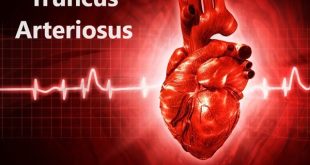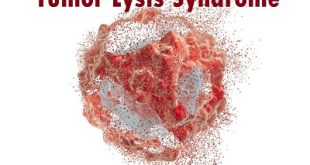What is telangiectasia?
Telangiectasia (commonly known as “spider veins”) are dilated or broken blood vessels located near the surface of the skin or mucous membranes. They often appear as fine pink or red lines, which temporarily whiten when pressed. “Matted” telangiectasias are clusters of these small dilated blood vessels that form a pink or red patch on the skin. Individuals who are otherwise healthy can develop this condition, and it is sometimes associated with varicose veins.
However, telangiectasias are also a classic feature of certain autoimmune diseases that affect the skin and other connective tissues (also called connective tissue diseases):
- Scleroderma (also called systemic sclerosis), both in its limited and systemic forms
- Dermatomyositis
- Lupus – periungual telangiectasias (those around fingernails or toenails) are common in lupus patientss
Pathophysiology
The pathophysiologic factors causing blood vessel dilatation in generalized essential telangiectasia are yet to be elaborated. Familial cases have been reported with an autosomal dominant pattern of inheritance.
What are the causes of telangiectasia?
The exact cause of telangiectasia is unknown. Researchers believe several causes may contribute to the development of telangiectases. These causes may be genetic, environmental, or a combination of both. It’s believed that most cases of telangiectasia are caused by chronic exposure to the sun or extreme temperatures. This is because they usually appear on the body where skin is often exposed to sunlight and air.
Other possible causes include:
- Alcoholism: can affect the flow of blood in vessels and can cause liver disease
- Pregnancy: often applies large amounts of pressure on venules
- Aging: aging blood vessels can begin to weaken
- Rosacea: enlarges venules in the face, creating a flushed appearance in cheeks and nose
- Habitual corticosteroid use: thins and weakens the skin
- Scleroderma: hardens and contracts the skin
- Dermatomyositis: inflames skin and underlying muscle tissue
- Systemic lupus erythematosus: can increase skin sensitivity to sunlight and extreme temperatures
The causes of hereditary hemorrhagic telangiectasia are genetic. People with HHT inherit the disease from at least one parent. Five genes are suspected to cause HHT, and three are known. People with HHT receive either one normal gene and one mutated gene or two mutated genes (it only takes one mutated gene to cause HHT).
Who is at risk of contracting telangiectasia?
Telangiectasia is a common skin disorder, even among healthy people. However, certain people are more at risk of developing telangiectases than others. This includes those who:
- Work outdoors
- Sit or stand all day
- Misuse alcohol
- Are pregnant
- Are older or elderly (telangiectases are more likely to form as skin ages)
- Have rosacea, scleroderma, dermatomyositis, or systemic lupus erythematosus (SLE)
- Use corticosteroids
Recognizing the symptoms of telangiectasia
Telangiectases can be uncomfortable. They are generally not life-threatening, but some people may not like how they look. They develop gradually, but can be worsened by health and beauty products that cause skin irritation, such as abrasive soaps and sponges.
Symptoms include:
- Pain (related to pressure on venules)
- Itching
- Threadlike red marks or patterns on the skin
The symptoms of HHT include:
- Frequent nosebleeds
- Red or dark black blood in stools
- Shortness of breath
- Seizures
- Small strokes
- Port-wine stain birthmark
Complications of telangiectasia
Complications that may occur in patients with OWRD (ie, HHT) include the following:
- Brain abscess
- Hemorrhagic or ischemic stroke
- High-output congestive heart failure
- Chronic GI bleeding and anemia
- Portal hypertension with esophageal varices
- Pulmonary hemorrhage
- Liver cirrhosis
Diagnosis and Test
Telangiectasia is common in people with no health problems and is generally a result of sun damage or aging.
Anyone experiencing severe cases of telangiectasia throughout the body with significant blood vessel enlargement should consult a doctor.
People should also seek treatment as soon as possible if they become aware of a family history of telangiectasia or have any bleeding or lesions in the mouth or eye area.
These symptoms could indicate a more serious condition.
To determine if there is an underlying medical condition, an individual may need some of the following tests:
- Blood tests
- CT scans
- Liver function studies
- MRI scans
- X-rays
Treatment for telangiectasia
Treatment is necessary only if the lesions cause symptoms or if they are a cosmetic concern.
Specific treatments include:
Cosmetic Camouflage
Cosmetic camouflage is a technique using topical creams or powders to conceal conspicuous skin conditions. Flesh-toned cover-up can immediately hide mild telangiectasia. For more prominent telangiectasia and facial redness, a slightly green-tinted foundation or moisturizer can neutralize the color. These compounds are cost effective and readily available. Look for products with the terms “redness concealer,” “redness relief,” or “redness solutions.” Department stores with large make-up counters will often have a cosmetic therapist (make-up artist) trained to help patients with cosmetic camouflage. He or she will help create a regimen to match individual skin tone and hide telangiectasia.
Lasers
Laser therapy is an effective method for treating facial telangiectases. The correct types of lasers are readily available in many dermatologist practices. Lunchtime procedures can be organised depending on the extent of the area being treated.
- 532 nm KTP laser can be used as a tracing laser for small to medium-sized telangiectases
- 595 nm pulse dye laser is effective for diffuse erythema and small to medium-sized telangiectases
- 755 nm Alexandrite lasers can be used for treatment-resistant telangiectases or in darker skin types
- 1064 nm long pulse Nd YAG lasers can be used to treat deeper and larger telangiectasias
- Other less commonly used lasers include the copper bromide laser and diode lasers.
Sclerotherapy is more effective in treating telangiectases on the legs.
Intense pulse light treatment (IPL)
IPL can be very effective in treating small to medium-sized facial telangiectases. Larger telangiectases respond better to longer wavelength lasers.
Hyfrectation and electrocautery
Fine needle hyfrector may be used but there are more side effects than with laser therapy.
Electrodessication
Electrodessication entails the insertion of fine needle into the blood vessel. An electrical current is then applied, which seals the vessel. This treatment may be helpful for simple facial telangiectasia; however, it has a higher risk of scarring compared to laser therapy.
Can telangiectasia be prevented?
Activities that trigger blushing or facial redness can worsen telangiectasia. Although they vary from person to person, common triggers include:
- Ultraviolet radiation (sunlight)
- Heat
- Cold
- Strong wind
- Alcohol consumption
- Smoking tobacco
- Hot drinks and foods
- Spicy foods
Products that result in irritation of the skin, such as abrasive cleansers, can also worsen telangiectasia.
Tips to help prevent telangiectasia
- Protect your skin from the sun by applying sunscreen, and wearing sunglasses and a hat.
- Use mild cleansers on your skin (such as those without dyes or fragrances).
- Minimize your exposure to extreme hot or cold temperatures.
- Avoid using topical steroids.
 Diseases Treatments Dictionary This is complete solution to read all diseases treatments Which covers Prevention, Causes, Symptoms, Medical Terms, Drugs, Prescription, Natural Remedies with cures and Treatments. Most of the common diseases were listed in names, split with categories.
Diseases Treatments Dictionary This is complete solution to read all diseases treatments Which covers Prevention, Causes, Symptoms, Medical Terms, Drugs, Prescription, Natural Remedies with cures and Treatments. Most of the common diseases were listed in names, split with categories.







